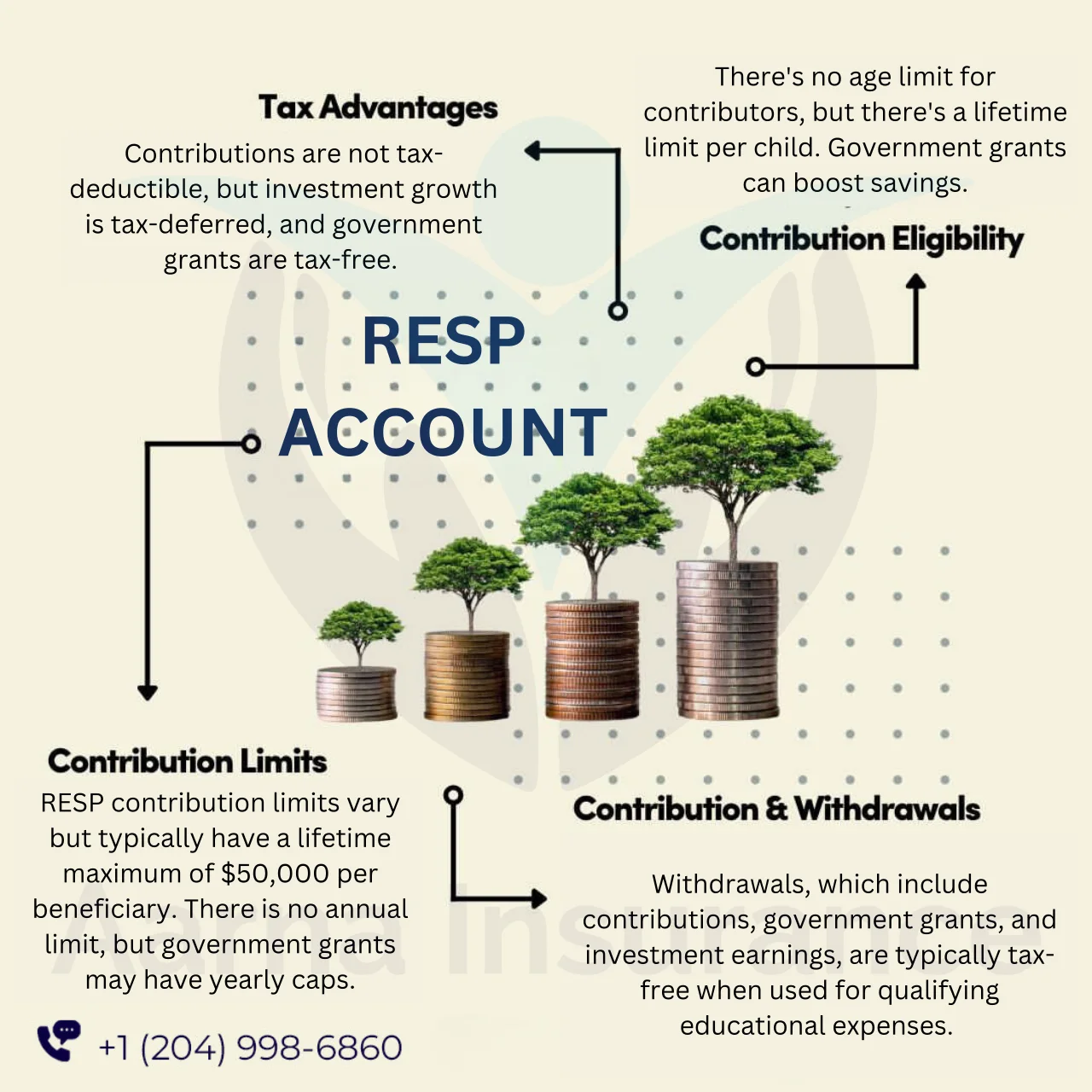Tax-Deferred Growth
Contributions made to an RESP grow tax-deferred until they are withdrawn, allowing the investments to compound over time without immediate tax implications.

A Registered Education Savings Plan (RESP) is a tax-advantaged savings account designed to help families save for their children's post-secondary education. The Canadian government introduced RESP to encourage higher education by offering various tax benefits and incentives.
For more in-depth knowledge, some specific scenarios and FAQs about Whole Life Insurance in Canada, please refer to our Blogs
Contributions made to an RESP grow tax-deferred until they are withdrawn, allowing the investments to compound over time without immediate tax implications.
One of the significant benefits of RESP is the availability of government grants, such as the Canada Education Savings Grant (CESG) and the Canada Learning Bond (CLB), which can enhance the overall savings.
While there is no annual limit on contributions, there is a lifetime contribution limit of $50,000 per child. This flexibility allows families to contribute according to their financial capacity.
When the beneficiary enrolls in a qualifying post-secondary program, the accumulated funds can be withdrawn as EAPs, which consist of both the contributions and the investment earnings. EAPs are taxable in the hands of the student, who typically has a lower income, thus minimizing the tax burden.
Super Visa insurance policy through us provides coverage for various emergency medical expenses, including accidental dental, diagnostics and lab, prescribed medical bills, medical evacuation/emergency return home, air ambulance, accidental death and many more benefits. Please refer the policy wording document.
RESP is primarily designed for children, and the funds are intended to support their education expenses when they pursue post-secondary studies.
Anyone can contribute to an RESP, making it a collaborative effort. This flexibility enables extended family members and friends to contribute towards a child's education fund.
Parents and grandparents often open RESPs for their children or grandchildren. They can contribute to the plan and take advantage of the government grants to maximize the savings.
The CESG and CLB provide additional funds, boosting the overall savings in the RESP.
The tax-deferred growth allows investments to accumulate without the immediate impact of taxes, leading to higher returns.
EAPs are taxable in the hands of the student, who typically has a lower income. This income splitting can result in lower overall taxes on the withdrawals.
RESP serves as a long-term savings vehicle with a specific educational purpose, encouraging families to prioritize and plan for their children's higher education.
RESP holders can choose from a variety of investment options, including stocks, bonds, and mutual funds, providing flexibility based on risk tolerance and financial goals.
In conclusion, RESP is a valuable financial tool that empowers families to save for their children's education while benefiting from tax advantages and government incentives. It is a collaborative effort that involves contributions from various sources, ultimately supporting the pursuit of higher education for the next generation. Consulting with an advisor at Aarna Insurance can provide personalized guidance based on individual circumstances.